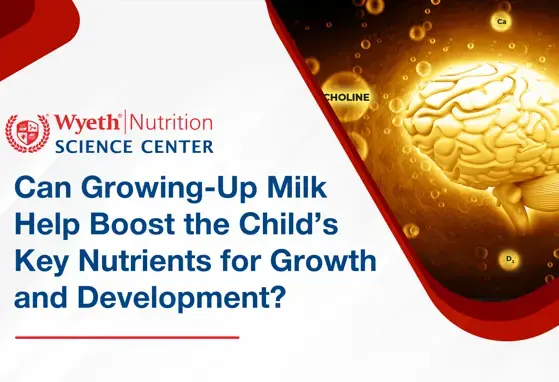Interview with Prof. Clemens Kunz – New insights on the role of human milk oligosaccharides (HMOs)

At a recent interview, Professor Clemens Kunz explored the potential health benefits of HMOs, specifically in infants with high hereditary allergy risk and on neurodevelopmental functions, and discussed the challenges in HMO research. Professor Kunz concluded that HMOs are the future of infant nutrition, and that we are at the beginning of a new era of supplementing infants who cannot be breastfed with HMOs. This article presents highlights from the interview.
- Possible health benefits of HMOs in infants with high hereditary allergy risk
- Potential role of HMOs in infant neurodevelopment

Professor Clemens Kunz Professor of Human Nutrition
Institute of Nutritional Sciences
Justus-Liebig University
Giessen, Germany
- What are HMOs and the significant milestones from discovery to synthesis and application of HMOs?
- What is the mechanism by which HMOs exert their properties in infants with high hereditary allergy risk and what is the role and association of FUT2 in allergic diseases?
- How do HMOs mediate the brain–gut axis and how do they influence neurodevelopmental functions?
- What are the challenges and difficulties in HMO research and in translating findings from animal studies into humans?
- Practical tips on HMO supplementation and Professor Kunz’s insights on HMO research
EM: Professor Clemens Kunz
R: Reporter
R: What are HMOs and the significant milestones from discovery to synthesis and application of HMOs?
CK: HMOs are complex, lactose-based oligosaccharides representing the third most abundant solid component in human milk.1-3 Most HMOs resist digestion in the small intestine, allowing them to play a significant role in the development of the gut microbiome and immune system in newborns. HMOs contain lactose at the reducing end, and besides galactose and N-acetylglucosamine, fucose and sialic acid can be added to this backbone via different linkages, accounting for the structural complexity and diversity of HMOs, and predisposing HMOs to multifunctionality.1,2,4 The total amount of HMOs in colostrum ranges from 20 to 25 g/L, and in mature human milk from 5 to 15 g/L.1,5,6 This wide range of HMO concentration in mature human milk is mainly caused by the different stages during lactation and the secretor or nonsecretor status of the mother.5,6 Secretors express fucosyltransferase-2 (FUT2), produce ɑ1-2 linked epitopes, and express milk characterized by an abundance of 2’-fucosyllactose (2’-FL) and other ɑ1-2-fucosylated HMOs, as opposed to nonsecretors, whose milk does not contain ɑ1-2-fucosylated HMOs.1,3,5,6 As such, infants’ predisposition towards certain diseases may be influenced by whether they are receiving milk from a secretor or a nonsecretor. For example, association studies have demonstrated that nonsecretor-fed infants are more susceptible to chronic inflammatory disorders like Crohn’s disease,7 but may be protected against norovirus infections.8
Secretors express fucosyltransferase-2 (FUT2), produce ɑ1-2 linked epitopes, and express milk characterized by an abundance of 2’-fucosyllactose (2’-FL) and other ɑ1-2-fucosylated HMOs.
The observation of the difference in faecal composition and health status between breastfed and bottle-fed infants around the 1900s was an important milestone finally leading to the discovery of HMOs. It was later discovered that this difference in faecal composition is due to the carbohydrate fraction in milk. Shortly, 2’-FL, 3-fucosyllactose (3-FL), lacto-N-tetraose and many other fucosylated and sialylated components were discovered at that time and this was the starting point of research into HMOs.9 In the 1950s, Professor Richard Kuhn provided the very first clear description of these oligosaccharides, and during the same period, Professor Paul Gyorgy, a famous paediatrician, together with the Nobel prize laureate Professor Kuhn demonstrated that the growth factors for Lactobacillus bifidus in human milk contain N-acetylglucosamine oligosaccharides.10
During the following 30 to 40 years, only biochemists were interested in HMOs because their structures resemble those of blood group antigens.9 The major breakthrough in HMO research occurred around 10 years ago, when developments in mass spectrometry allowed fast identification and characterization of HMOs. Today, there are various methods available for identification and production of HMOs in large amounts, which made it possible, for the first time, to supplement 2’-FL and lacto-N-neotetraose (LNnT) in formulas for infants who cannot be breastfed.11,12
R: What is the mechanism by which HMOs exert their properties in infants with high hereditary allergy risk and what is the role and association of FUT2 in allergic diseases?
CK: A recent study by Sprenger et al. analyzed FUT2-dependent oligosaccharides in 266 human milk samples from mothers of infants with high allergy risk. The results demonstrated that infants with high hereditary risk for allergies and born by caesarean section may have a lower risk of IgE-associated allergic diseases and IgE-associated eczema at 2 years of age when fed human milk with FUT2-dependent oligosaccharides.13
The manifestation of allergic diseases depends on multiple factors, including genetic predisposition, diet and the gut microbiome.13 However, the mechanism by which HMOs impact allergy risk is not known. It is speculated that FUT2-dependent oligosaccharides modulate mucosal immunity through an influence of the early microbiota establishment.12,14 There are many factors influencing the immune system of newborns, and it is necessary to determine which stage of the immune cascade HMOs might have an influence on.
It is speculated that FUT2-dependent oligosaccharides modulate mucosal immunity through an influence of the early microbiota establishment.
R: How do HMOs mediate the brain–gut axis and how do they influence neurodevelopmental functions?
CK: At the moment, it is difficult to draw firm conclusions that HMOs improve neurodevelopmental functions, as there are no human studies and standardized research methods available. HMOs may be involved in neurodevelopmental functions, with studies showing that 2’-FL, 3’-sialyllactose (3’-SL) and 6’-sialyllactose (6’-SL) influence neurodevelopmental functions in rodents. Rats orally supplemented with 2’-FL during lactation showed enhancement in spatial learning and recognition memory during childhood and adulthood, suggesting that early exposure to 2’-FL may persist beyond the period of supplementation.8,15,16 Another study demonstrated that mice fed a diet containing 3’-SL and 6’-SL presented normal microbiome composition and behavioural responses during stressor exposure, potentially via the brain–gut axis.17
HMOs may be involved in neurodevelopmental functions, with studies showing that 2’-FL, 3’-SL and 6’-SL influence neurodevelopmental functions in rodents.
Whether or not HMOs affect neurodevelopmental functions via the brain–gut axis remains unclear in humans, but HMOs may reach the brain through the systemic circulation or via short-chain fatty acids produced during fermentation of undigested dietary constituents, which signals the brain to function in a particular way.15-17
R: What are the challenges and difficulties in HMO research and in translating findings from animal studies into humans?
CK: One example of the difficulty in translating animal studies to human studies can be illustrated by host–microbe interactions. For example, influenza virus recognizes ɑ-2,3 linkages in birds while it recognizes ɑ-2,6 linkages in humans.18 As HMOs serve as soluble analogs to host glycan epitopes on the intestinal cell surface, they can mimic viral receptors and block infections.1-3 However, an HMO that serves as a natural barrier to viral infections in birds obviously does not have the same effects in humans. Results gathered from animal studies may be an indication for human outcomes, but it is important to conduct HMO research in humans to demonstrate that these results gathered from animal studies are also reflected in humans.
Another challenge in HMO research is quantification. Mass spectrometry is not considered to be the method of choice for determining the amount of HMOs in milk samples and recommending the dosage of HMOs for supplementation. So far, there is no standardized method available for HMO quantification, which makes it difficult to compare reported data. Generally, data indicates that mature human milk contains between 5 to 15 g/L of HMOs and that the amount of 2’-FL in secretors’ milk is between 1 to 4 g/L, which is a good range to consider when supplementing with 2’-FL.5
Practical tips on HMO supplementation and Professor Kunz’s insights on HMO research
- HMOs cannot be compared to any prebiotics available in the market. To date, there are two HMOs that can be synthesized via biotechnology in bulk amounts, namely 2’-FL and LNnT, which are structurally identical to those naturally in human milk. For the very first time, it is possible to supplement infants who cannot be breastfed with HMOs that are structurally identical to those in human milk, and these two oligosaccharides have been acknowledged by regulatory authorities as safe.
- Because little is known about the exact function, metabolism and mechanism of action of HMOs, it is important to be careful when translating data from animal studies into humans. In vivo studies on individual HMOs in humans are required to determine their therapeutic and preventive potential.
HMOs cannot be compared to any prebiotics available in the market.
Summary:HMOs are complex, lactose-based carbohydrates unique to human milk that promote healthy gut colonization.1-3 HMOs are present in large quantities and are structurally diverse, with approximately 150 structures identified thus far.5,6 To date, large-scale production of two HMOs, 2’-FL and LNnT, is possible. These HMOs are structurally identical to those in human milk and have been accepted by regulatory authorities as safe for supplementation in formulas for infants who cannot be breastfed. We are at the beginning of a new era, with HMOs entering the mainstream and becoming the mainstay of infant health within the next few years. |
WYE-EM-095-MAR-18
Reference
- Kunz C, et al. Ann Rev Nutr 2010;20,699–722.
- Donovan SD, Comstock SS. Ann Nutr Metab 2016;69 Suppl 2:42–45.
- Bode L. Glycobiology 2012;22:1147–1162.
- Urashima T, et al. Trends Glycosci Glycotechnol (in press).
- Kunz C, et al. J Pediatr Gastroenterol Nutr 2017;64:789–798.
- Thurl S, et al. Nutr Rev 2017;75:920–933.
- McGovern DPB, et al. Hum Mol Genet 2010;19:3468–3476.
- Currier R, et al. Clin Infect Dis 2015;60:1631–1638.
- Kunz C. Adv Nutr 2012;3:430S–439S.
- György P, et al. J Pediatr 1953;11:98–108.
- Marriage BJ, et al. J Pediatr Gastroenterol Nutr 2015;61:649–658.
- Puccio G, et al. J Pediatr Gastroenterol Nutr 2017;64:624–631.
- Sprenger N, et al. Eur J Nutr 2017;56:1293–1301.
- Rausch P, et al. Proc Natl Acad Sci 2011;108:19030–19035.
- Oliveros E, et al. J Nutr Biochem 2016;31:20–27.
- Vázquez E, et al. J Nutr Biochem 2015;26:455–465.
- Tarr AJ, et al. Brain Behav Immun 2015;50:166–177.
- Kuhn R, et al. Chem Ber 1956;98:2013–35.
If you liked this post you may also like

Infographic - Can Growing-Up Milk Help Boost the Child's Key Nutrients for Growth and development?

The Learning Lead - Volume 2, 2024: "Can Growing-Up Milk Help Boost The Child’s Key Nutrients for Growth and Development?"

Maternal Dietary Intake and Human Milk Composition
